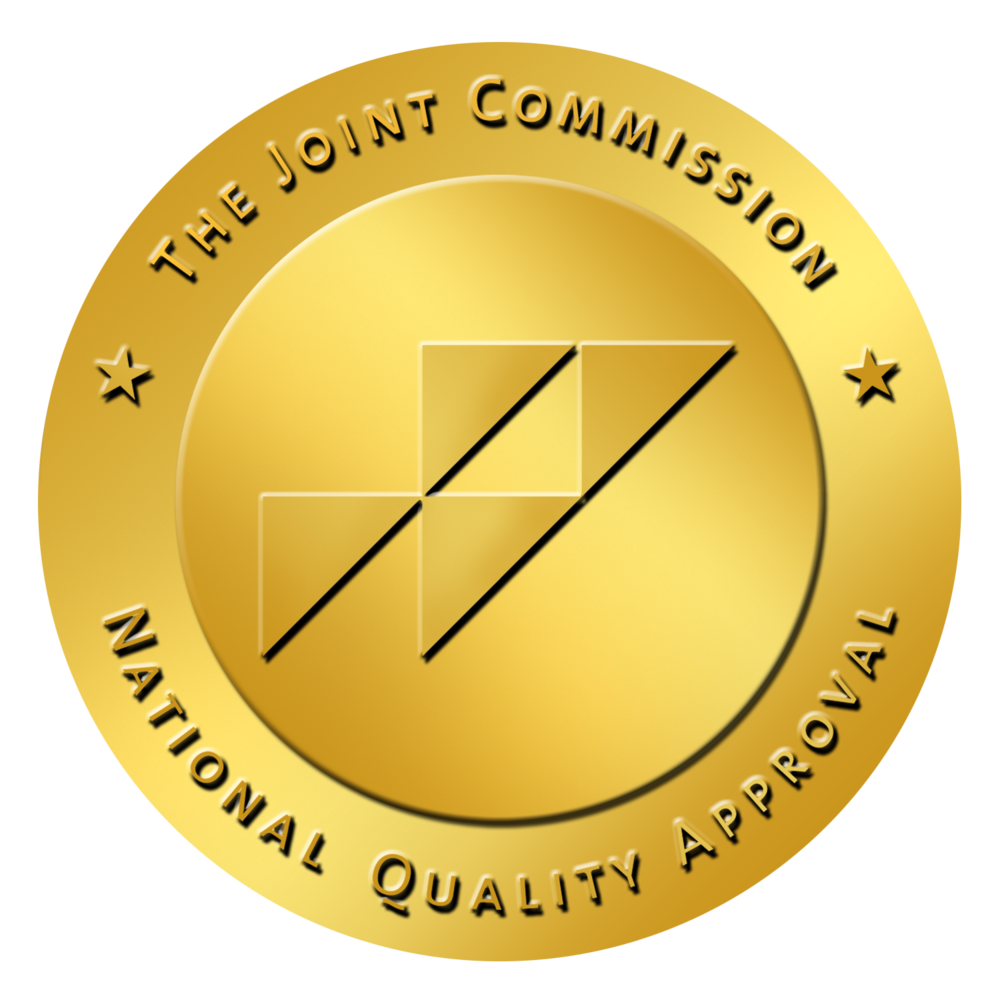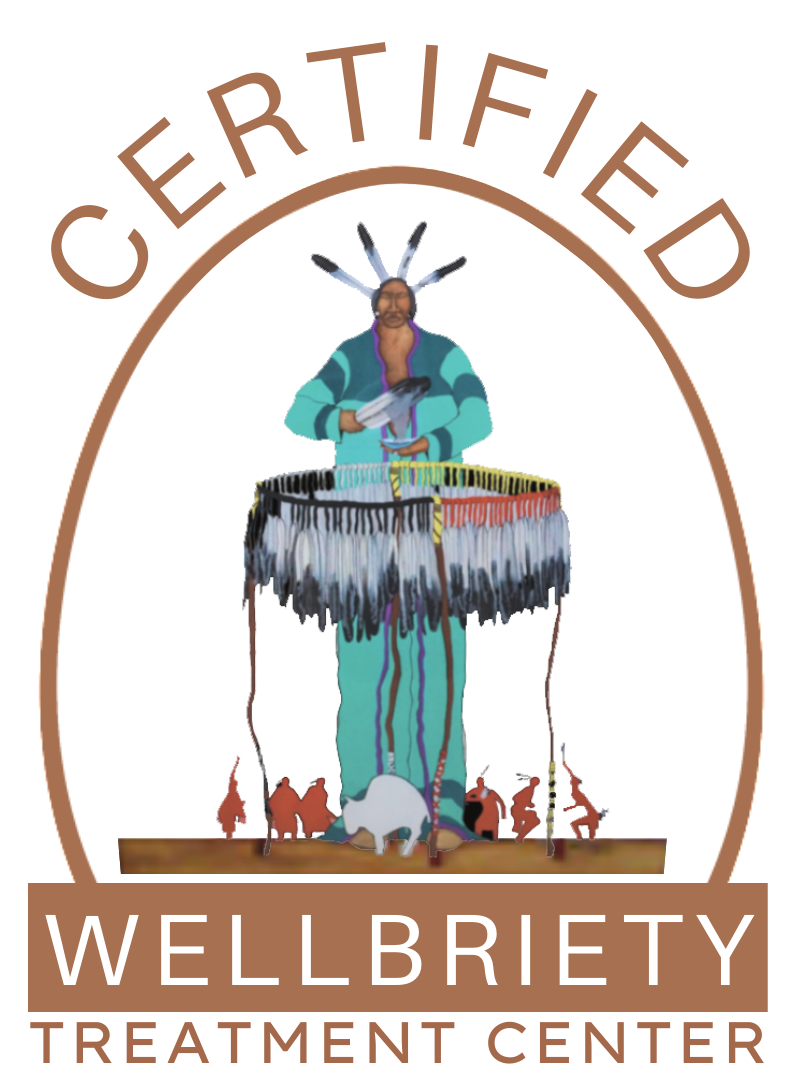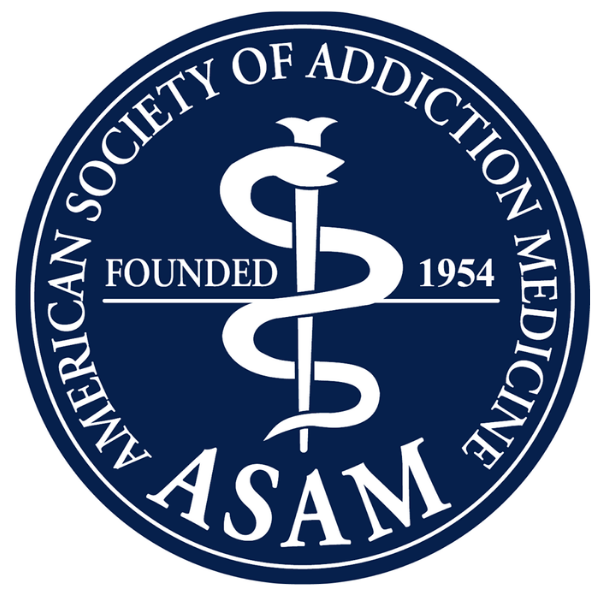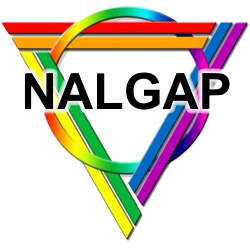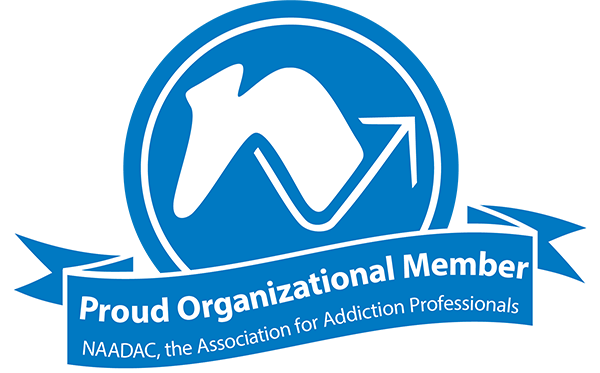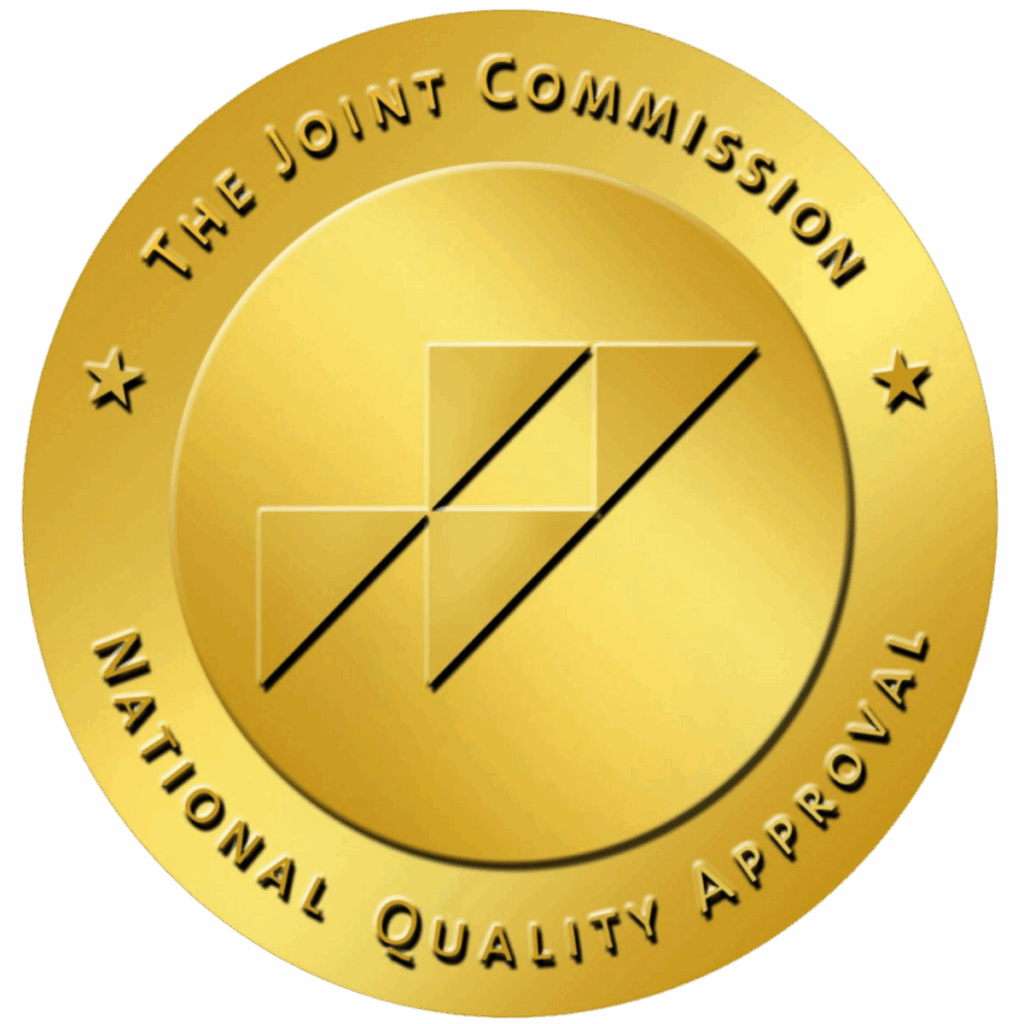According to the United Nations’ 2023 World Drug Report, approximately 316 million people globally used drugs (excluding alcohol and tobacco)—an increase from about 292 million in 2022, rising faster than world population growth. Moreover, this was an increase of 28% over the prior ten years. Drug addiction is clearly a serious and growing problem, both worldwide and in the US — according to the 2023 National Survey on Drug Use and Health (NSDUH), approximately 48.5 million Americans aged 12 and older, or 17.1% of the population, struggled with substance abuse. This means if you are struggling with drug addiction, you are by no means alone. The good news: professional help is available. Read on to learn more.
Why Are Drugs Addictive?
Drugs are addictive because they act on the brain’s dopamine receptors, bringing feelings of pleasure and reward. This overstimulation of dopamine creates a “high” that many people want to experience again. The brain begins to associate the drug with pleasure and relief, reinforcing repeated use. Over time, this chemical manipulation changes how the brain functions, leading to powerful cravings, compulsive behavior, and loss of control over use.
With continued exposure, the brain adapts. It reduces natural dopamine production or the number of receptors to balance the overstimulation. This process, called tolerance, means the individual must use more of the drug to achieve the same effect. Simultaneously, withdrawal symptoms may emerge when the drug leaves the system, driving the user to continue using it just to feel “normal.” This is the nature of addiction.
Addiction is both a mental health condition and a brain disease. Individuals with addiction may:
- Struggle to stop using, even if they want to
- Neglect responsibilities at home, school, or work
- Continue using despite health, legal, or social problems
The broader clinical diagnosis is known as a substance use disorder (SUD) or drug use disorder (DUD), which ranges from mild to severe.
What Are the Most Addictive Drugs?
Certain substances are more addictive than others due to how powerfully they affect the brain’s reward system and how quickly they lead to physical or psychological dependence.
Below is a list of some of the most addictive drugs, their effects, and why they pose such a high risk for abuse and addiction:
Opioids
Opioids come from the opium plant. They include things like morphine, heroin, fentanyl, oxycodone, hydrocodone, and other drugs.They’re often used for pain management but also bring on intense euphoria. As depressants, they also include dangerous effects like drowsiness, and slowed breathing that can lead to an extremely high risk of fatal overdose, rapid physical dependence, and severe withdrawal. They are among the most addictive substances out there.
Cocaine
Derived from the coca plant, cocaine is a stimulant drug, the use of which brings on effects like intense euphoria, increased energy and alertness, and reduced appetite. Repeat use of cocaine can lead to serious concerns including heart problems, paranoia, binge/crash cycles, and psychological dependence. It also has a very high addiction potential, especially when used in the form of crack, which delivers a fast and powerful high.
Amphetamines
This class of pharmaceutical stimulant drugs includes things like methamphetamine (meth), amphetamine salts, and others. Commonly used to treat things like Attention Deficit Hyperactivity Disorder (ADHD), they have a high abuse potential due to the powerful euphoria, focus, and energy they elicit. Risks from amphetamine abuse include aggression, psychosis, severe dental problems (“meth mouth”), and long-term brain damage.
Nicotine
Nicotine is a naturally occurring compound derived from the tobacco plant. It’s a mild stimulant that can boost feelings of wakefulness, focus, and relieve stress (at least before tolerance builds up). It does carry a risk of long-term dependence, and when smoked in a cigarette or cigar, can raise a person’s risk for cancer and heart and lung disease. While there is no risk of overdose, nicotine is highly addictive and one of the most commonly used drugs.
Alcohol
Alcohol is a colorless liquid that comes from fermented sugar. The drinkable form of it (there are other forms) is ethanol alcohol. Drinking it leads to relaxation, lowered inhibitions, and euphoria at low doses; at high doses, drowsiness and confusion. Alcohol can be very addictive and its abuse can be devastating, bringing on liver disease, brain damage, physical dependence, and potentially deadly withdrawal seizures (Delirium tremens).
Benzodiazepines
Benzodiazepines are tranquilizer drugs that provide sedation, anxiety relief, and muscle relaxation. They are commonly prescribed to treat anxiety and seizures. They have a high addiction potential and once a person becomes dependent on them, dangerous withdrawal symptoms can set in, as well as memory loss.
The Role of Culture in Drug Abuse
Our understanding of drug addiction is deeply influenced by culture, social norms, and media. For example, substances like alcohol and nicotine are legal and widely advertised, making them more socially acceptable despite their addictive potential. Indeed, their social ubiquity is part of why nicotine and alcohol addictions are particularly hard to shake. Meanwhile, certain illegal drugs are heavily stigmatized, even though they may be equally or less addictive.
Cultural attitudes also affect access to treatment. Some people may feel shame or fear judgment for seeking help, while others may not recognize their substance use as a problem because it fits within their social norms. Lack of awareness of the signs of addiction can also play a role in the decision to seek treatment, something we will cover next.
Signs of Drug Abuse
Recognizing the signs of drug abuse early can make a significant difference in preventing long-term damage and helping someone seek treatment.
Common signs include:
- Changes in behavior: Sudden shifts in mood, irritability, or lack of motivation
- Neglecting responsibilities: Skipping work, school, or family obligations
- Social withdrawal: Isolating from friends or loved ones
- Risk-taking behavior: Driving under the influence, stealing, or unsafe sex
- Physical changes: Bloodshot eyes, sudden weight loss or gain, unusual smells on breath or clothing
- Financial problems: Unexplained need for money, borrowing or stealing
- Changes in sleep patterns: Insomnia or excessive sleeping
- Secretive behavior: Hiding substances, lying about whereabouts, or being vague
While these signs do not always indicate drug abuse, noticing several of them at once—especially in a short period—may point to a developing problem.
Types of Drug Abuse
Drug abuse can take many forms, but two of the most common categories include illicit drug abuse and prescription drug abuse. Illicit (illegal) and prescription drugs can be either stimulants or depressants, and opioids and amphetamines figure into both categories.
Illicit Drug Abuse
Illicit drug abuse refers to the use of illegal substances such as heroin, cocaine, methamphetamine, ecstasy, or hallucinogens. These drugs are often unregulated, dangerous, and highly addictive. Illicit drug use can quickly spiral into dependency, especially when individuals use them to cope with trauma, stress, or mental illness.
Prescription Drug Abuse
Prescription drug abuse involves taking medications in a way not intended by the prescribing doctor.
This could mean:
- Taking someone else’s prescription
- Using a drug to get high rather than for medical reasons
- Taking higher doses or more frequently than prescribed
Being prescribed a drug you do not actually need, or at dangerously high levels (see: “pill mills”)
Commonly abused prescription drugs include opioids (like oxycodone), benzodiazepines (like Xanax), and stimulants (like Adderall). Although these drugs are legal when used properly, misuse can lead to severe health risks and addiction.
Drug Use Disorders
A Drug Use Disorder (DUD) is a medical condition characterized by the compulsive use of drugs despite harmful consequences. According to the Diagnostic and Statistical Manual of Mental Disorders, Fifth Edition (DSM-5), a person must meet at least two out of eleven criteria within a 12-month period to be diagnosed with a DUD.
DSM-5 Criteria for Addiction:
- Using more of the substance than intended
- Wanting to cut down or stop using but being unable
- Spending a lot of time obtaining, using, or recovering from the drug
- Craving or strong desire to use
- Failing to fulfill responsibilities at work, school, or home
- Continued use despite interpersonal or social problems
- Giving up important activities in favor of substance use
- Using in physically dangerous situations (e.g., driving)
- Continued use despite physical or psychological harm
- Developing tolerance (needing more for the same effect)
- Experiencing withdrawal symptoms
Levels of Severity:
- Mild: two to three symptoms
- Moderate: four to five symptoms
- Severe: six or more symptoms
This framework helps clinicians understand the impact of drug use and determine the appropriate level of care needed for treatment.
There’s also the Drug Use Disorder Questionnaire, used by clinicians to help diagnose addiction and its severity.
Signs of Drug Addiction
As drug use progresses from abuse to addiction, the symptoms often become more intense and harder to hide.
Common signs of drug addiction include:
- Loss of control: Inability to stop using despite wanting to
- Intense cravings: Constant thoughts about the drug
- Physical dependence: Needing the drug to feel normal
- Withdrawal symptoms: Anxiety, nausea, sweating, tremors, or seizures when not using
- Neglecting personal health: Poor hygiene, malnutrition, or ignoring medical issues
- Increased tolerance: Needing more of the substance to get the same effect
- Destructive behavior: Damaging relationships, losing jobs, or legal trouble due to drug use
- Denial or minimization: Insisting there’s no problem, even when facing serious consequences
Addiction is not a sign of weakness or moral failure—it’s a complex condition that affects the brain and body. Recognizing the signs is a critical first step toward recovery.
Drug Withdrawal
Drug withdrawal refers to the physical and psychological symptoms that occur when a person who is physically or psychologically dependent on a drug stops using it. The severity and duration of withdrawal symptoms vary depending on the drug, length of use, dose, and individual physiology.
Common drug withdrawal symptoms:
- Anxiety or depression
- Irritability or mood swings
- Insomnia or disrupted sleep
- Sweating and chills
- Muscle aches and joint pain
- Nausea, vomiting, and diarrhea
- Fatigue or weakness
- Intense drug cravings
- Headaches
- Tremors or shaking
- Rapid heartbeat
- Difficulty concentrating
The drugs with actually life-threatening withdrawals are:
- Alcohol (seizures, delirium tremens (DTs), hallucinations, severe confusion, high blood pressure, heart complications)
- Opioids (rapid heart rate, severe dehydration from vomiting and diarrhea)
- Benzodiazepines (seizures, severe anxiety, hallucinations, psychosis, extreme insomnia, suicidal ideation)
- Barbiturates (seizures, cardiovascular collapse, confusion, high fever)
These substances should never be stopped abruptly without medical supervision, as unsupervised withdrawal can result in coma or death.
Physical Dependency on Drugs
Physical dependence occurs when the body adapts to a drug and requires it to function normally. Over time, the body becomes accustomed to the drug’s presence and experiences withdrawal symptoms when it’s reduced or stopped.
Early Signs of Physical Dependence Include:
- Tolerance – needing more of the drug to achieve the same effect
- Cravings – a physical urge to use the drug, often triggered by environmental or emotional cues
- Frequent dosing – taking the drug more often or in higher quantities
As dependence grows, withdrawal symptoms begin to appear soon after the drug leaves the system. For example, opioids can cause muscle aches and flu-like symptoms within hours of the last dose, while benzodiazepines may trigger anxiety or tremors.
The risk of life-threatening withdrawal is highest with substances like alcohol, benzodiazepines, and barbiturates. Attempting to detox alone from these drugs can be extremely dangerous. Medical detox programs provide the safety, monitoring, and medications needed to manage symptoms and prevent complications.
Psychological Dependency on Drugs
Psychological dependence involves the emotional and mental attachment to a drug. Even without physical symptoms, a person may feel that they need the substance to function, cope, or feel pleasure.
Signs of psychological dependence can include:
- Thinking obsessively about using the drug
- Believing the drug is needed to relax, sleep, socialize, or be productive
- Using the drug to escape stress, anxiety, trauma, or emotional pain
- Feeling panic, anxiety, or distress when the drug isn’t available
- Using despite a desire or intention to stop
Psychological dependence can lead to long-term changes in thought patterns and behavior. Over time, people may begin to neglect personal responsibilities, hobbies, and relationships. Mental health often deteriorates, and the individual may become isolated, emotionally numb, or trapped in a cycle of shame and avoidance.
Consequences of Drug Addiction
Drug addiction affects nearly every aspect of life, with profound physical, psychological, and social consequences.
- Physical health: Heart disease, liver damage, respiratory issues, weakened immune system, overdose
- Mental health: Depression, anxiety, paranoia, psychosis, suicidal thoughts
- Social consequences: Strained relationships, job loss, legal problems, financial instability
- Cognitive function: Impaired decision-making, memory loss, lack of concentration
- Quality of life: Isolation, homelessness, loss of purpose or direction
Addiction is a chronic, progressive disease—but it is treatable. The earlier intervention happens, the greater the chance of successful recovery.
Mental Side Effects of Drug Abuse
Drugs wreak havoc on the mind and body alike.
Short-term mental side effects of drug abuse include:
- Mood swings
- Anxiety or panic attacks
- Euphoria followed by emotional crashes
- Hallucinations or paranoia
- Impaired judgment and impulse control
Longer-term mental side effects of drug abuse include:
- Depression
- Anxiety disorders
- Memory loss and learning difficulties
- Psychotic disorders (e.g., drug-induced schizophrenia)
- Increased risk of suicidal thoughts or actions
Chronic drug abuse can exacerbate or even lead to schizophrenia, clinical depression and anxiety, and other debilitating mental conditions.
Physical Side Effects of Drug Abuse
Drug abuse can have disastrous outcomes for your physical health.
Negative physical effects of drug abuse include:
- Elevated or slowed heart rate
- Increased blood pressure or dangerously low blood pressure
- Nausea, vomiting, or diarrhea
- Dizziness and loss of coordination
- Breathing difficulties
Over the long term, this can lead to conditions such as:
- Liver damage (especially from alcohol and opioids)
- Lung disease (e.g., from smoking or vaping drugs)
- Cardiovascular disease (e.g., heart attack, stroke)
- Neurological damage
- Increased risk of infectious diseases (e.g., HIV, hepatitis C from injection drug use)
- Hormonal imbalance and fertility issues
Understanding the full spectrum of addiction’s consequences—from withdrawal to long-term physical and mental effects—underscores the importance of early intervention and comprehensive treatment.
Drug Addiction FAQ
The following is a list of commonly asked questions regarding drug use and addiction.
Drug misuse refers to using a medication incorrectly (e.g., taking more than prescribed), while drug abuse involves using any drug—legal or illegal—in a way that causes harm or leads to addiction.
Drugs hijack the brain’s reward system, causing intense pleasure. Over time, the brain becomes dependent, leading to cravings and compulsive use despite negative consequences.
Yes. Drug addiction is a chronic brain disease that affects behavior, decision-making, and self-control. It often requires long-term treatment and support.
Drug abuse does not directly cause schizophrenia but can trigger symptoms in people who are genetically vulnerable, especially with heavy use of stimulants, cannabis, or hallucinogens.
In some cases, yes—mild to moderate damage may improve with sobriety, lifestyle changes, and medical care. However, severe damage (e.g., heart failure) may be permanent.
Drug abuse can lead to broken trust, financial stress, emotional trauma, and neglect of children or loved ones. It often disrupts relationships and family stability.
Increased availability, overprescribing, and the perception that prescription drugs are safer than street drugs have all contributed to the rise in misuse and addiction.
According to recent data, over 20 million Americans struggle with addiction annually, including both illicit and prescription drugs.
Prevention, education, early intervention, and access to treatment are key. For individuals, stopping drug abuse often requires medical detox, therapy, support groups, and long-term recovery planning.
Rehab for Drug Addiction
Rehab for drug addiction is a structured treatment process that helps individuals safely stop using drugs, address the root causes of addiction, and build a foundation for long-term recovery.
Treatment is often delivered in multiple levels of care based on individual needs:
- Medical Detox: Supervised withdrawal management
- Residential/Inpatient (Res): 24/7 care in a structured setting
- Partial Hospitalization Program (PHP): Day treatment with clinical support
- Intensive Outpatient Program (IOP): Therapy several times per week
- Outpatient Program (OP): Flexible treatment while living independently
Rehab programs use evidence-based treatments like cognitive behavioral therapy (CBT), motivational interviewing (MI), and trauma-informed care, often combined with holistic services such as yoga, meditation, nutrition counseling, and art therapy to support healing in mind, body, and spirit.
Drug Detox
Drug detox is the first step in recovery—a medically supervised process that allows the body to rid itself of drugs while managing withdrawal symptoms.
Detox usually occurs in three stages:
- The First Eight Hours
Early symptoms begin and may include anxiety, sweating, restlessness, and cravings.
- 24–72 Hours
Symptoms typically peak and can become intense.
Depending on the substance, individuals may experience:
- Nausea, vomiting, diarrhea
- Muscle aches and tremors
- Insomnia or fatigue
- Confusion or mood swings
- Seizures or hallucinations (in severe cases)
- 72+ Hours
Symptoms start to stabilize, though post-acute symptoms like depression or cravings may persist.
Due to the risk of life-threatening complications (especially with alcohol, benzodiazepines, and opioids), 24/7 medical supervision is crucial.
During detox, clients may receive:
- Medications to ease symptoms and prevent complications
- Ongoing clinical and nursing assessments
- Individual and group therapy (as tolerated)
- Nutritional support, hydration, and rest
Detox can be a lengthy process — at times, it can take up to a week or more. During this timeframe, medical experts are available with support to alleviate the worst withdrawal symptoms.
Medications for Drug Use Disorder
During medical detox, FDA-approved medications may be used to reduce withdrawal symptoms and support a safer detoxification process.
These may include:
- Opioid withdrawal: Methadone, buprenorphine (Suboxone), clonidine
- Alcohol withdrawal: Benzodiazepines (e.g., Ativan), anticonvulsants, thiamine
- Benzodiazepine withdrawal: Gradual tapering using longer-acting benzos
Medication-Assisted Treatment (MAT) is also available as part of long-term recovery for opioid use disorder (OUD) and alcohol use disorder (AUD). MAT combines medications with therapy to reduce cravings and support relapse prevention.
Inpatient Drug Rehab
Inpatient or residential treatment offers 24/7 support in a safe, structured environment. It is ideal for those with moderate to severe addiction or co-occurring mental health disorders.
Services typically include:
- Medication management and psychiatric care
- Individual, group, and family therapy
- Case management and discharge planning
- Nutritional support and physical wellness activities
- Holistic therapies (e.g., art, movement, mindfulness)
Inpatient treatment typically lasts one to three months.
Drug Addiction Counseling
Counseling begins during detox for those who are medically stable and becomes the core component of inpatient treatment. Counseling services focus on identifying triggers, building coping skills, and healing underlying emotional pain.
At Aliya Health Group, we offer a range of evidence-based therapies, including:
- Cognitive Behavioral Therapy (CBT)
- Dialectical Behavior Therapy (DBT)
- Eye Movement Desensitization and Reprocessing (EMDR)
- Trauma-informed therapy
- Family therapy and psychoeducation
These therapies are delivered by licensed clinicians and tailored to each individual’s history and goals.
Outpatient Drug Rehab
Outpatient treatment provides continued support while individuals begin to reintegrate into daily life. It includes multiple levels of care:
- PHP: Five to six hours of therapy per day, several days a week
- IOP: Three to four days per week with group and individual sessions
Outpatient services may include:
- Ongoing therapy and medication management
- Case management and relapse prevention planning
- Employment and life skills support
- Access to sober living environments
- Peer support and accountability
Outpatient care allows individuals to maintain recovery while balancing work, school, or family responsibilities.
Benefits of Drug Rehab
Drug rehab offers individuals the tools and support needed to break the cycle of addiction and rebuild their lives.
Benefits of drug rehab include:
- Safe detoxification under medical care
- Personalized therapy to address trauma and triggers
- Coping skills and relapse prevention plans
- Life skills training, such as communication and job readiness
- Supportive peer community and connection
- Continuum of care, from inpatient to outpatient to aftercare
Each level of care reinforces recovery while preparing clients for independent living.
How To Stay Sober After Drug Addiction Treatment
Staying sober after rehab requires ongoing structure, community, and personal accountability.
Key tools include:
- Aftercare Planning: A personalized roadmap that includes continued therapy, medical follow-up, and recovery goals
- Sober Living: Structured housing with peer accountability for those transitioning from treatment to independent living
- Twelve-Step Programs: Peer-based recovery groups like AA, NA, or SMART Recovery that provide fellowship and a spiritual foundation for sobriety
- Alumni Community Involvement: Staying engaged with your rehab center’s alumni events, support groups, and mentorship programs for ongoing connection
Staying sober does not need to be a lonely journey. By taking advantage of opportunities for structure and fellowship, you greatly increase your chances of putting your addiction behind you.
Help For Drug Addiction
Drug addiction treatment involves more than just stopping the act of taking drugs—it requires a comprehensive approach that addresses the biological, psychological, and social aspects of the disease. According to the institutes of health and the Drug Enforcement Administration, the rise in overdose death is often linked to potent drugs of abuse like opioids, club drugs, and bath salts, as well as rising concerns around cannabis addiction, cocaine addiction, and amphetamine addiction.
Treatment often begins with screening and assessment, using validated assessment tools and screening tests to identify specific addictions disorders, including cannabis use disorder, prescription medication misuse, and alcohol and drug dependencies. Understanding the symptoms and causes, which can include adverse childhood experiences and environmental factors, is vital for developing effective, personalized treatment plans.
If you or a loved one is struggling with drug addiction, help is available. Recovery is possible, and you don’t have to do it alone. At Aliya Health Group, we provide compassionate, evidence-based care across all levels of treatment—from detox to outpatient support.
Call us today to learn more about our drug rehab programs and take the first step toward a life free from addiction.
Your journey to healing starts now.
- 2021 National Survey of Drug Use and Health (NSDUH) Releases – SAMHSA
- Drug Use Disorder (DUD) Questionnaire: Scale Development and Validation – PMC
- Epidemiology of DSM-5 Drug Use Disorder – JAMA Network
- Information about Medication-Assisted Treatment (MAT) – FDA.
- What Is a Substance Use Disorder? – Psychiatry.org
- Commonly Abused Drugs Chart – NIDA
- Drugs (psychoactive) – WHO
- Drugs – FDA
- World Drug Report 2023 – United Nations
- https://www.psychiatry.org/psychiatrists/practice/dsm

